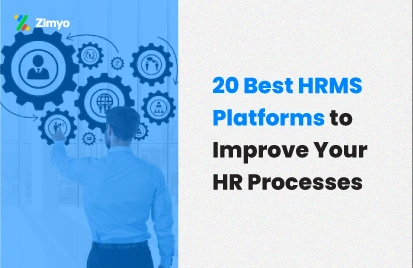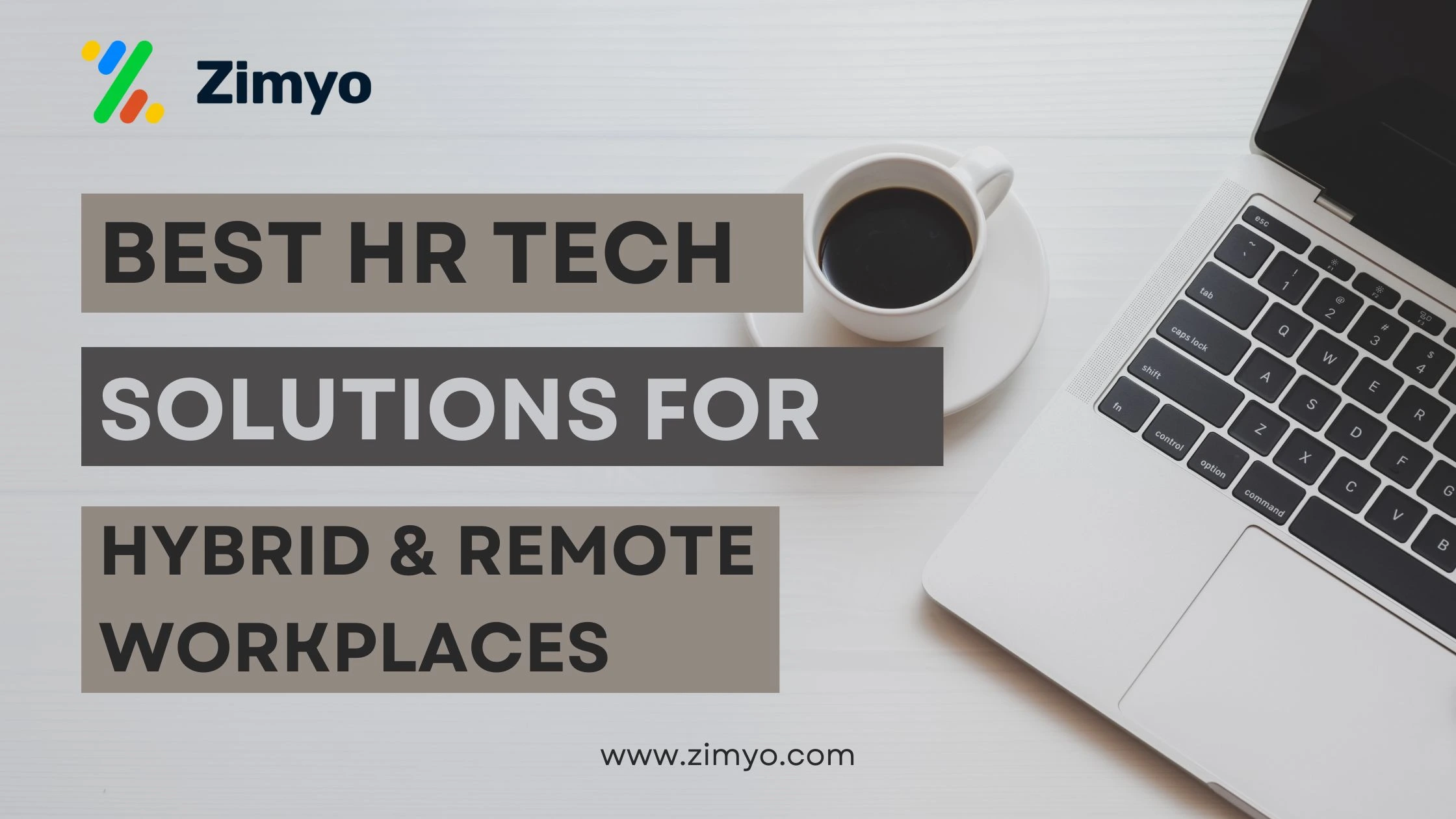Strategic Human Resource Management (HRM) is a proactive approach to managing human resources. It comes with long-term business objectives in mind. Unlike traditional HR of day-to-day employee management, strategic HRM aligns HR practices with the company’s mission. Thus, enhancing overall business performance.
Definition of Strategic Human Resource Management
HR experts and scholars define strategic human resource management as:
“Strategic HRM is the planning, organizing, directing, and controlling of the procurement, development, compensation, integration, maintenance, and reproduction of human resources to the end that individual, organizational, and societal objectives are accomplished.”
Edwin B. Flippo
“Strategic HRM is the process of acquiring, training, appraising, and compensating employees, and attending to their labor relations, health, safety, and fairness concerns.”
Gary Dessler
In essence, HRM focuses on aligning employee potential with business objectives through strategic HRM practices.
The Importance of Strategic HR Management
Importance of human resource management is that it ensures the workforce is optimized to meet organizational goals. It helps businesses gain a competitive advantage by attracting top talent, promoting innovation, and increasing employee productivity. Through effective human resource strategy, organizations can reduce turnover, enhance engagement, and build a high-performance culture.
Objectives of Human Resource Management
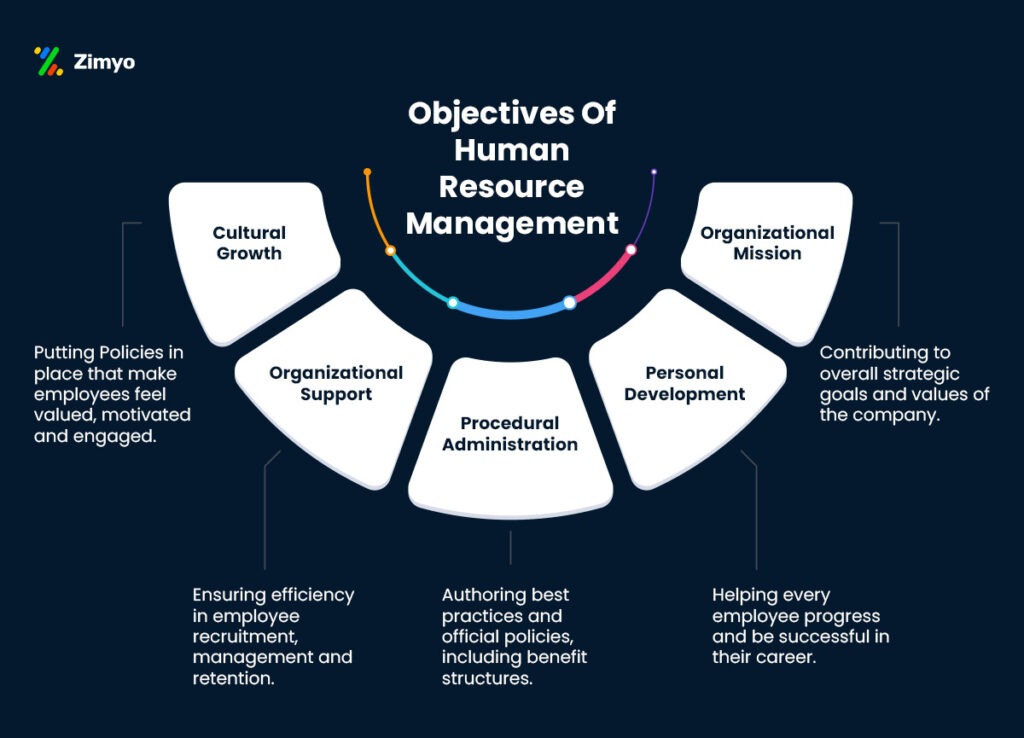
The key objectives of human resource management include:
- Workforce Optimization: Ensuring the right people are in the right roles.
- Employee Satisfaction: Creating a positive work environment to boost morale.
- Compliance & Ethics: Ensuring adherence to labor laws and ethical standards.
- Organizational Growth: Supporting business expansion through strategic HRM.
- Technology Integration: Implementing HR systems for improved efficiency.
Key Components of Human Resource Strategy
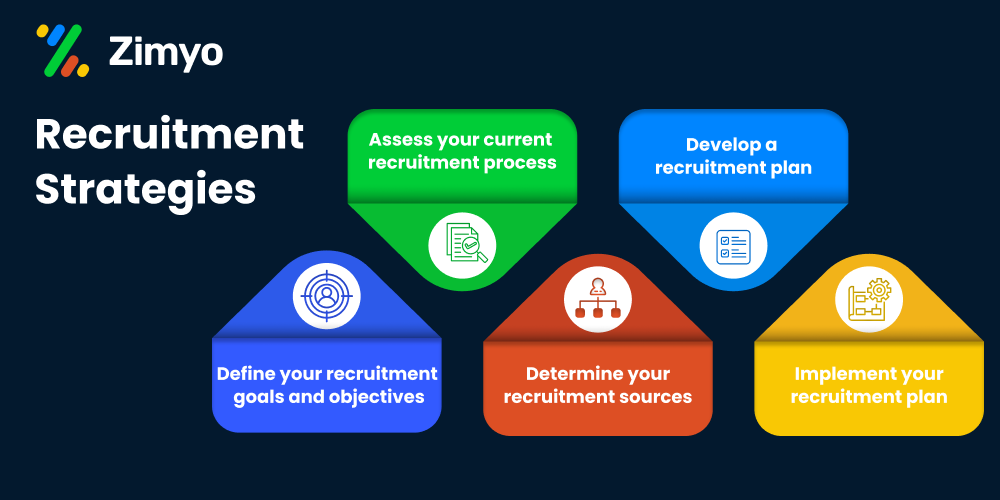
1. Talent Acquisition & Retention
Finding and retaining the right employees is crucial for business success. Strategic HRM uses advanced hiring practices, including data-driven recruitment and employer branding, to attract top talent.
2. Workforce Planning
HR strategy includes analyzing workforce trends to plan for future needs. Effective resource management ensures that organizations are prepared for growth and market changes.
4. Employee Development & Training
A well-trained workforce leads to improved performance and job satisfaction. Investing in employee learning programs enhances skillsets and boosts productivity.
5. Performance Management
Strategic HRM involves setting clear performance expectations, conducting regular evaluations, and providing constructive feedback to employees.
6. Compensation & Benefits
Competitive salary structures, bonuses, and benefits improve employee retention and satisfaction, making compensation a key element of human resource management.
How Strategic HRM Contributes to Business Success

Strategic HR management plays a crucial role in:
- Enhancing employee engagement and motivation
- Improving organizational efficiency
- Driving innovation through a skilled workforce
- Strengthening employer branding
- Ensuring compliance with labor laws
Let us gain insights about each of these as to how Strategic HRM contributes to business success.
1. Enhancing Employee Engagement and Motivation
- A well-planned human resource strategy ensures employees feel valued and engaged.
- Performance-based incentives and career development programs boost motivation.
- Employee engagement tools in HRMS and HR software help track satisfaction levels.
2. Improving Organizational Efficiency
- HR systems streamline recruitment, payroll, and compliance, reducing administrative burdens.
- Digital HR solutions, including the best HR software, automate time-consuming tasks.
- Workforce analytics in HRIS helps optimize resource allocation.
3. Driving Innovation Through a Skilled Workforce
- Strategic HRM promotes continuous learning and development.
- Companies using human resource management system tools can identify skill gaps.
- Talent development programs encourage innovation and adaptability.
4. Strengthening Employer Branding
- HR strategy enhances workplace culture, making companies more attractive to job seekers.
- Positive work environments and employee advocacy improve brand reputation.
- Human resources services such as recruitment marketing build a strong employer identity.
5. Ensuring Compliance with Labor Laws
- HR systems ensure adherence to employment regulations and ethical standards.
- Legal compliance modules in HRMS and best HRIS mitigates risks.
- Human resources companies provide specialized compliance solutions to reduce legal exposure.
The Role of HR Systems in Strategic HRM

HR Technology plays a vital role in modern HR strategy by automating processes, reducing administrative workload, and improving decision-making.
Choose an All-in-One HRMS
HRMS (Human Resource Management System) helps organizations integrate various HR functions into a single platform. It can streamline HR functions, from payroll processing to talent management. Businesses can choose the best HR software based on their unique needs.
HR solutions, including outsourced HR services, help businesses manage compliance, recruitment, and employee relations effectively. Thus, making Human Resources Information System (HRIS), an indispensable need of the new HR space.
Best Practices for Implementing an HRMS
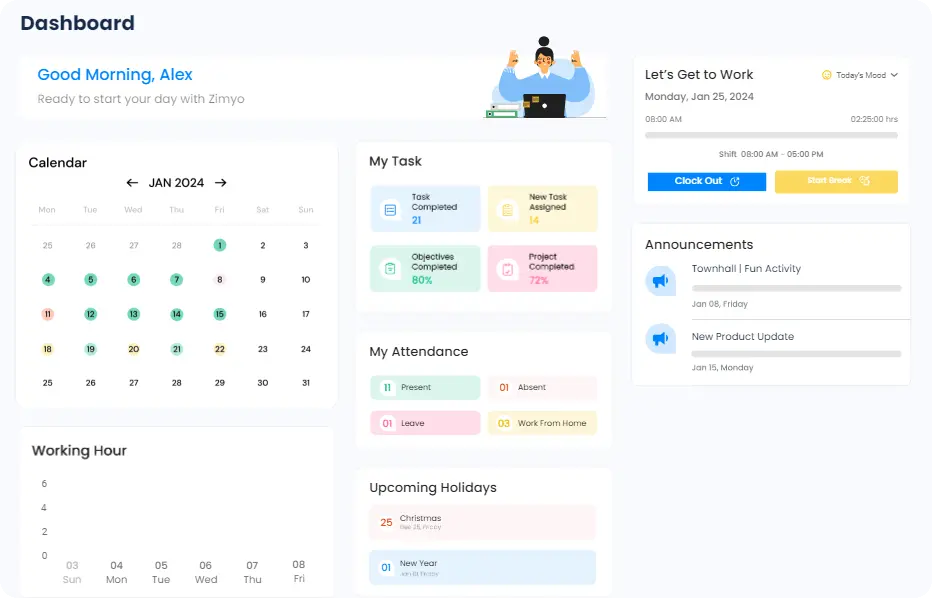
- Assess Organizational Needs: Identify HR pain points before choosing an HRM system.
- Choose the Best HRIS or HRMS: Evaluate HR software options based on HR operation features and usability.
- Train Employees in HR Systems: Ensure smooth adoption by training HR teams and employees.
- Monitor Performance: Regularly assess the HR system’s impact on HR processes
Challenges in Strategic HRM and How to Overcome Them

Challenges | Solutions |
Resistance to Change | Provide training, communicate benefits, and involve employees. |
Data Security Risks | Implement cybersecurity measures and use encrypted HR software. |
Talent Shortages | Strengthen employer branding and offer competitive salaries. |
Compliance Issues | Stay updated on labor laws and use automated compliance tools. |
Integration of HR Technology | Choose user-friendly HR systems and offer technical support. |
Employee Engagement Challenges | Promote a positive culture and recognize employee efforts. |
Workforce Diversity Management | Promote inclusion and implement unbiased hiring practices. |
Aligning HR Strategy with Business Goals | Conduct regular strategy reviews and use HR analytics. |




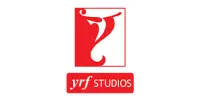


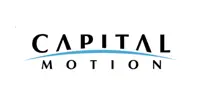

The Crux
Strategic Human Resource Management combined with HR technology is essential for business growth and sustainability. By integrating HR strategy, HR systems, and employee engagement, HRs can build a strong workforce that drives success. Investing in HR software, companies can further align HR functions, making it easier to achieve long-term goals.
I was able to implement the platform on my own. It helps in assigning the tasks to other employees, conducting surveys and polls, and much more. The ease of use and self-onboarding is something that I would like to appreciate.
Sonali, Kommunicate
Zimyo simplifies attendance management for our organization. The leave and attendance are so streamlined that we have never faced any difficulties with the system.
Anurag, Eggoz Nutrition
Frequently Asked Questions (FAQs)
What is the strategic human resource management?
Strategic Human Resource Management (SHRM) is about making sure that a company’s HR practices, like hiring, training, and managing employees, support its long-term goals. It focuses on planning ahead to meet the company’s needs, using data to make decisions, and creating a work culture that helps the business succeed. SHRM ensures that the right people with the right skills are in place to help the company grow and achieve its objectives.
What are the 5 steps of strategic HR management?
The five steps of strategic HR management are:
Workforce Planning: Assessing current and future staffing needs to align with business goals.
Talent Acquisition: Recruiting the right people with the necessary skills and fit for the company’s culture.
Employee Development: Offering training and career growth opportunities to enhance skills and performance.
Performance Management: Setting clear expectations, evaluating performance, and providing feedback for improvement.
Compensation and Retention: Designing fair reward systems and strategies to keep top talent engaged and committed.
What do you mean by SHRM?
SHRM stands for Strategic Human Resource Management. It refers to the process of aligning an organization’s human resource practices and strategies with its long-term business goals. SHRM focuses on planning, developing, and managing the workforce to enhance organizational performance and competitive advantage. This includes activities such as talent acquisition, employee development, performance management, and creating a positive work culture that supports the company’s objectives.
What are the 5 P's of strategic human resource management?
The 5 P’s of Strategic Human Resource Management are:
Philosophy: The organization’s overall approach and values related to managing people, which guide HR practices and decisions.
Policies: The formal guidelines or rules that shape HR practices, such as recruitment, compensation, and employee development, ensuring consistency and alignment with business goals.
Programs: The specific HR initiatives or programs (e.g., training, performance management, employee engagement) designed to support the organization’s objectives.
Practices: The day-to-day actions and activities that HR professionals carry out to implement the HR philosophy and policies, such as hiring, onboarding, and performance reviews.
Process: The methods and systems used to manage HR activities, ensuring they are efficient, consistent, and aligned with the strategic goals of the business.

